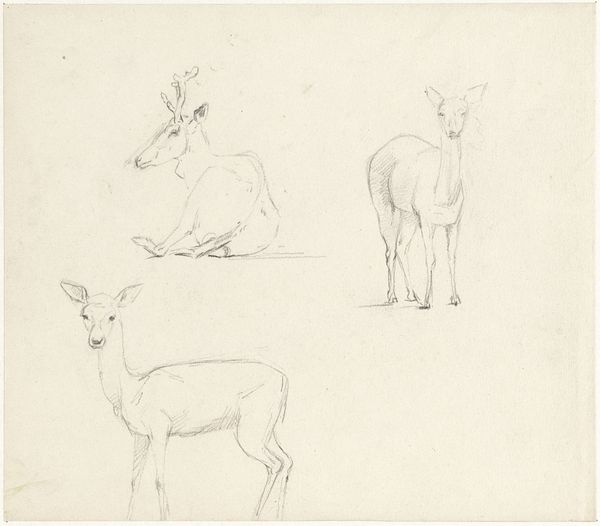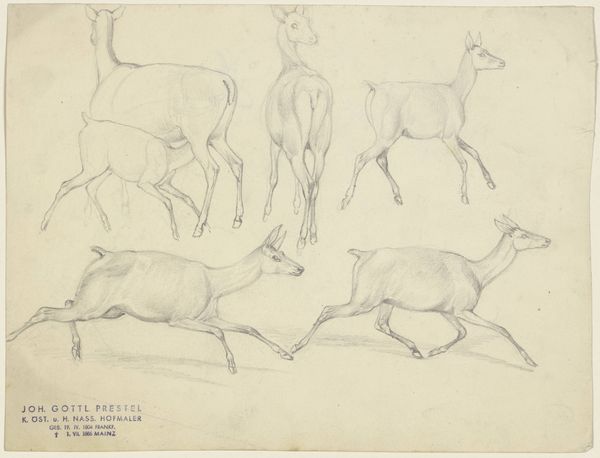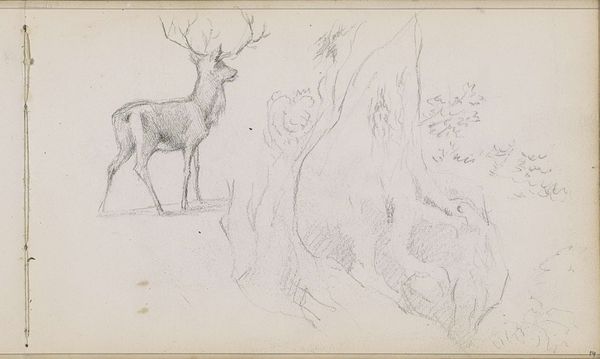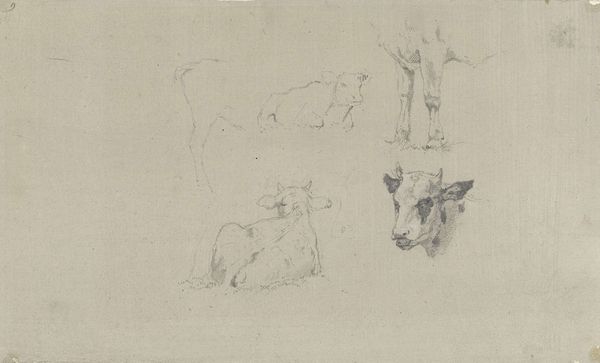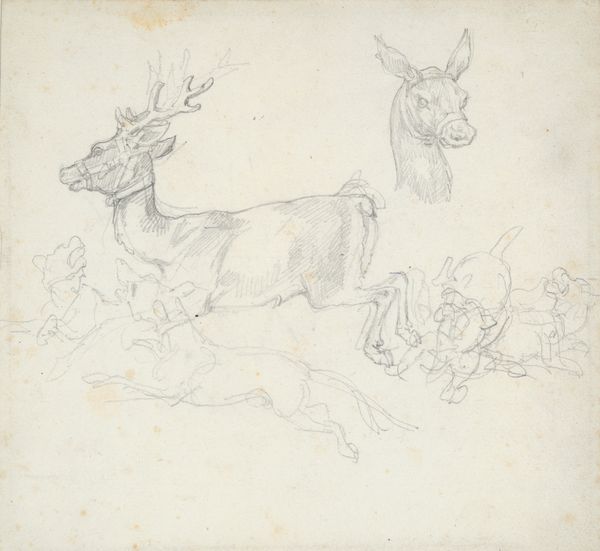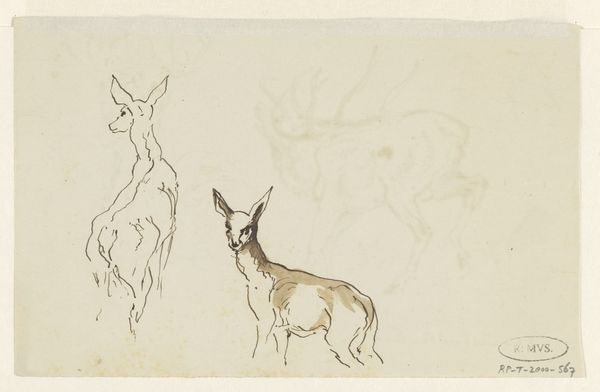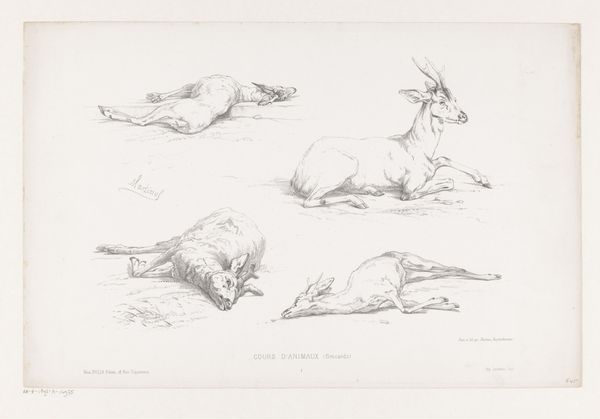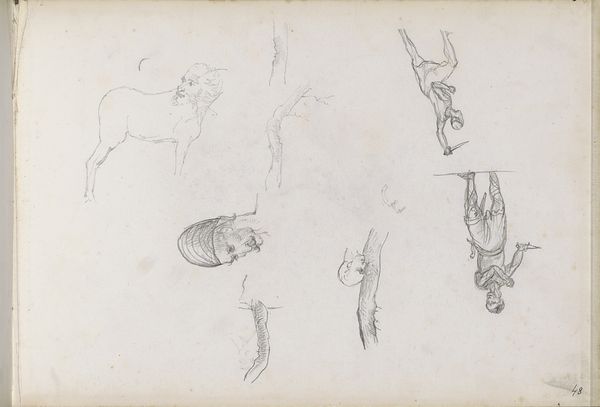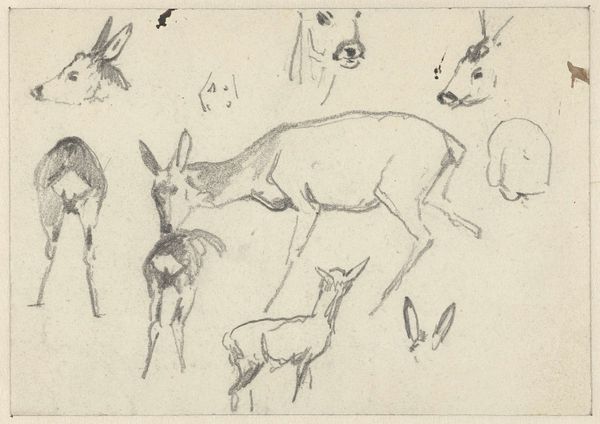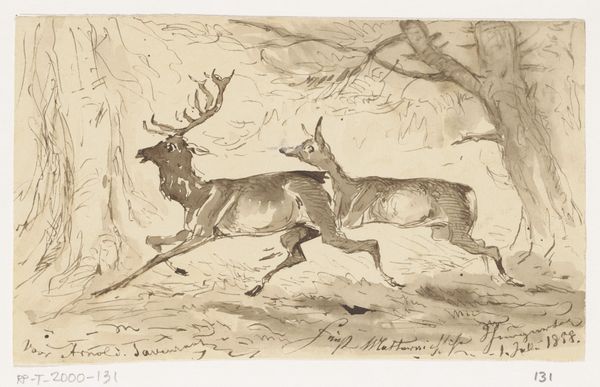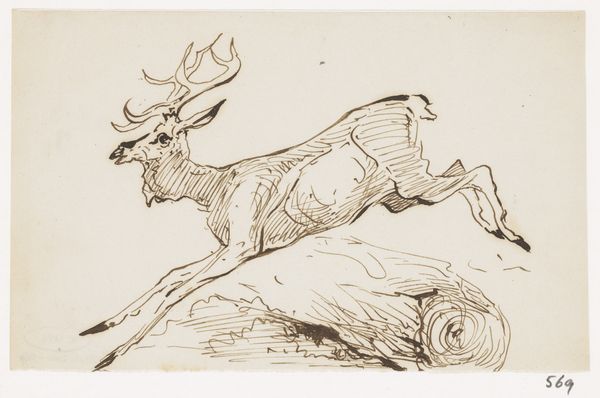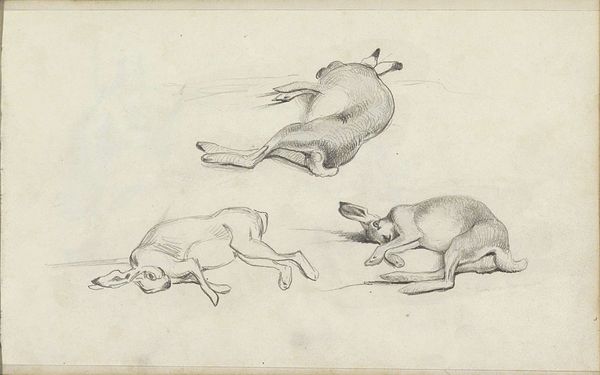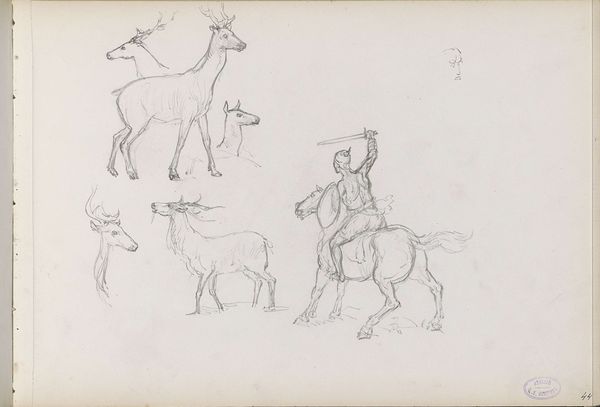
drawing, paper, pencil
#
drawing
#
pencil sketch
#
landscape
#
figuration
#
paper
#
pencil
#
horse
Copyright: Rijks Museum: Open Domain
Curator: Before us we have George Hendrik Breitner’s drawing, "Paarden en een man," from 1873. It’s currently held here at the Rijksmuseum. Editor: The sketch-like quality lends a fleeting, dreamlike presence. The upturned horses almost defy gravity. Curator: Indeed. Breitner's manipulation of perspective and form is remarkable. The composition presents an almost cubist flattening of space, fracturing our usual understanding. Editor: There is such visible labor here in the immediacy of the medium; the swift pencil marks, the visible corrections… it all speaks to the working methods prevalent in artistic circles in the Netherlands at that moment. One wonders where this sheet was made; in a studio? On location in a stable? Curator: A very pertinent question. Breitner frequently utilized photography as studies for his paintings, and that method informed his drawings as well, influencing how he saw the subject: from what vantage point, the emphasis, how he would crop the composition… He was using mechanical reproduction to train his eyes. Editor: The use of pencil feels very telling about accessing affordable materials. The social fabric of art production depended a lot on available raw materials at the time and its connection with local industries. The scale allows intimacy but also poses challenges about legibility in broader public spaces, given the lightness. Curator: Consider how Breitner renders only key contours, suggestive shapes. There’s a tension created by his reduction to pure line. It allows for our own subjective completion, engaging the viewer. Editor: In that regard, the use of accessible, utilitarian materials invites an engagement removed from elitism, suggesting this as being more a study object than finished artwork for private consumption. Curator: A fascinating reading indeed. Ultimately, both perspectives contribute to enriching the experience and discourse of art history. Editor: It’s a welcome perspective, hopefully opening pathways for understanding material use, labor and the tools involved when producing the final product.
Comments
No comments
Be the first to comment and join the conversation on the ultimate creative platform.
